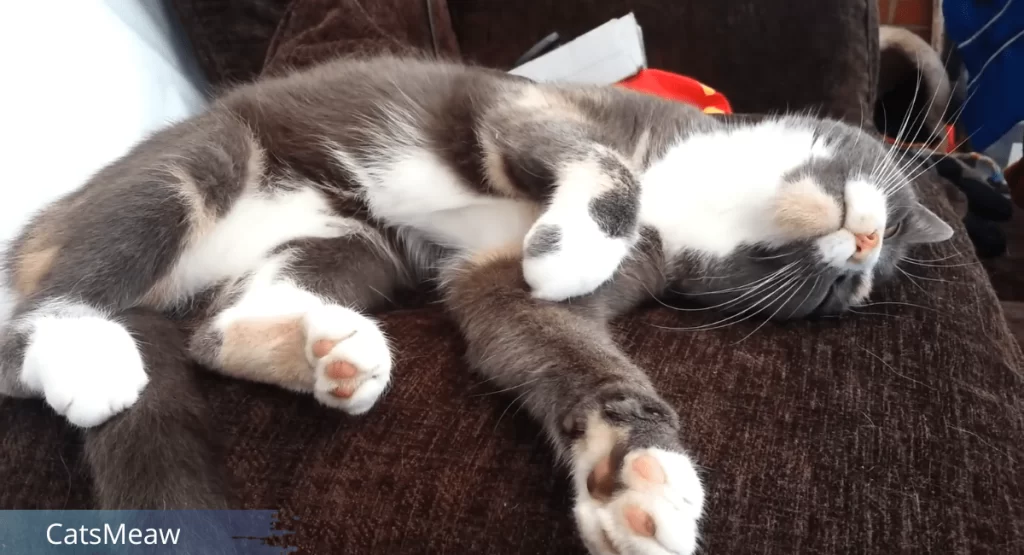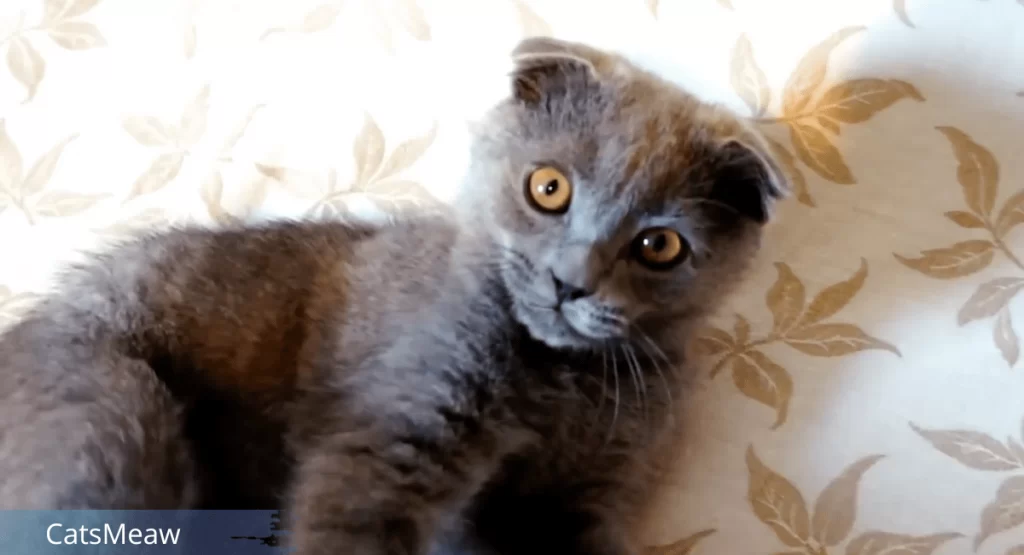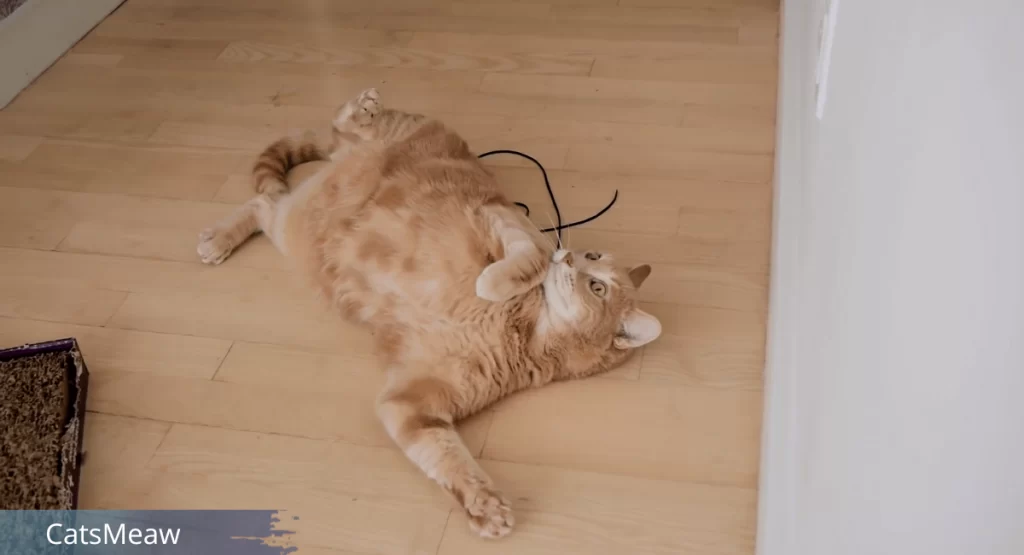Cats are fascinating creatures, each with its unique quirks and habits. One of the most intriguing behaviors you might notice is your cat rolling on back. While this may seem like a simple and cute action, it can actually be a sign of various emotional and physical states.

In this article, we’ll explore the many reasons why your cat rolling on its back, delving into feline psychology, health, and communication. We’ll also discuss how to respond appropriately to this behavior to ensure your cat feels safe, loved, and understood.
1. Your Cat Feels Safe and Relaxed
When talkin about cat rolling on back, one of the most common reasons is that it feels completely safe and relaxed. Cats are naturally cautious animals, and exposing their belly—a vulnerable part of their body—indicates a deep sense of trust in their environment and in you. In the wild, a cat would only expose its belly when it feels no threat from predators. So, if your cat is rolling around on its back in your presence, it’s a sign that it sees you as a trusted companion.
How to Respond:
If your cat is rolling on its back as a sign of trust, it’s essential to respect that vulnerability. While it might be tempting to rub your cat’s belly, many cats don’t enjoy this and might react defensively. Instead, offer gentle strokes on their head or chin, areas where cats generally enjoy being petted.
2. Your Cat is Marking Its Territory
Cats have scent glands located in various parts of their bodies, including their paws and the area around their tail. When your cat is rolling on its back, it might be marking its territory by spreading its scent.
This behavior is more common in multi-cat households or when a new pet has been introduced to the home. By rolling on its back and rubbing its scent glands against the floor or furniture, your cat is leaving a message to other animals that this area is claimed.
Our pick: The Best Interactive Toys for Cats Indoor
How to Respond:
Understanding this behavior is crucial, especially if you have more than one cat. If territorial disputes arise, provide separate spaces for each cat, including individual sleeping areas, litter boxes, and feeding stations. This can help reduce tension and prevent conflicts.
3. Your Cat is Inviting Playtime
Sometimes, a cat rolling on back is an invitation to play. Cats are playful creatures, and rolling around can be a way to engage you in interactive play. This is especially true if your cat’s eyes are wide open, its ears are perked, and its tail is flicking. These are signs that your cat is in a playful mood and might want to chase a toy or engage in a mock battle.
How to Respond:
Take this opportunity to play with your cat using interactive toys like feather wands, laser pointers, or small balls. Engaging in regular playtime not only strengthens your bond with your cat but also helps to keep your feline friend physically active and mentally stimulated.
4. Your Cat is Trying to Cool Down
Cats are sensitive to changes in temperature, and if your cat rolling on back, it might be trying to cool down. The belly has less fur than other parts of the body, and by exposing it to the air or a cool surface, your cat can regulate its body temperature. This behavior is often seen during hot weather when your cat is seeking relief from the heat.

How to Respond:
Ensure your cat has access to cool areas of the house, especially during hot weather. Provide plenty of fresh water, and consider setting up a fan or air conditioner in the rooms where your cat likes to spend time. If you notice your cat panting or showing signs of heat stress, consult your veterinarian immediately.
5. Your Cat is in Heat
If your female cat is not spayed, rolling on her back could be a sign that she is in heat. This behavior is often accompanied by loud vocalizations, restlessness, and increased affection towards people and objects. Cat rolling on back is part of the mating behavior and can be an indicator that she is ready to mate.
How to Respond:
If you’re not planning to breed your cat, it’s advisable to have her spayed. Spaying not only prevents unwanted litters but also reduces the risk of certain health issues, such as uterine infections and breast cancer. If your cat is already spayed and is still displaying this behavior, it could be a sign of another health issue, and you should consult your veterinarian.
6. Your Cat is Itchy or Uncomfortable
Another reason your cat might be rolling on its back is that it’s itchy or uncomfortable. This could be due to fleas, skin allergies, or other dermatological issues. Rolling around on the floor can help relieve the itchiness or discomfort your cat is feeling.
Related: Best Interactive Toys for Indoor Cats
How to Respond:
Regular grooming and flea prevention are essential for your cat’s comfort and health. If you notice your cat rolling on back frequently, scratching excessively, or if you see red or inflamed areas on its skin, it’s time to visit the vet. Your veterinarian can diagnose and treat any underlying conditions, ensuring your cat feels better soon.
7. Your Cat is Expressing Happiness
Cats can express their happiness and contentment in various ways, and rolling on their back is one of them. If your cat is purring, rubbing its head against you, and rolling on its back, it’s likely a sign that your cat is feeling happy and content. This is particularly common after your cat has eaten a satisfying meal or has just enjoyed some quality time with you.
How to Respond:
When your cat is expressing happiness, you can reciprocate by speaking to it in a soft, soothing voice and offering gentle pets. Positive reinforcement with treats or a favorite toy can also enhance your bond and encourage this happy behavior.
8. Your Cat is Stretching
Just like humans, cats enjoy a good stretch after waking up or sitting in one position for a long time. Rolling on their back might be part of a stretching routine, helping to loosen muscles and joints. This is a natural behavior and is particularly common after a nap or when your cat is preparing to become more active.
How to Respond:
If your cat is rolling on its back to stretch, there’s no specific action you need to take. However, it’s a good reminder of the importance of providing your cat with a comfortable sleeping area and encouraging regular activity to keep its muscles and joints healthy.
9. Your Cat is Seeking Attention
Cats are intelligent and know how to get your attention. If your cat notices that rolling on its back makes you respond—whether by talking to it, petting it, or playing with it—it might start using this behavior as a way to grab your attention. This can be particularly true if your cat feels like it’s not getting enough interaction from you.
How to Respond:
Make sure you’re giving your cat enough attention throughout the day. Set aside time for regular play, petting, and interaction. If your cat is rolling on its back to seek attention, respond positively but also ensure it’s not becoming too demanding or developing behavior problems as a result.

10. Your Cat is Practicing Self-Defense
Although less common, a cat rolling on back could be a defensive posture. In the wild, if a cat is confronted by a threat, rolling onto its back allows it to use all four paws, armed with sharp claws, to fend off an attacker. If your cat feels threatened or startled, it might roll onto its back in preparation to defend itself.
How to Respond:
If your cat is rolling on its back out of fear or defensiveness, it’s important to remove the source of stress and give your cat space. Avoid trying to pet or pick up your cat when it’s in this state, as it might scratch or bite in self-defense. Instead, create a calm environment and let your cat approach you when it feels safe again.
11. Your Cat is Showing Off
Cats can be show-offs, and rolling on their back might be a way to display their agility and flexibility. This is often seen in cats that are feeling particularly proud of themselves, perhaps after a successful hunt (even if it’s just a toy) or when they’re in a playful and confident mood.
How to Respond:
If your cat is showing off, enjoy the performance! Engage in play if your cat seems interested, or simply admire your cat’s grace and charm. This is a light-hearted behavior that contributes to the joy of living with a cat.
12. Your Cat is Communicating with Other Cats
In multi-cat households, rolling on the back can be a form of communication between cats. It can indicate submission, playfulness, or even a way to diffuse tension. Cats use body language extensively to communicate with one another, and rolling on their back is one way they send messages to their feline companions.
How to Respond:
Observe how your cats interact when one of them rolls on its back. If it leads to playful interactions or peaceful coexistence, there’s no need to intervene. However, if it seems to escalate into aggression or tension, you may need to provide separate spaces or distract them with toys or treats to prevent conflicts.
Conclusion
Understanding why your cat is rolling around on its back can enhance your relationship and help you respond appropriately to your cat’s needs and emotions. Whether it’s a sign of trust, a playful invitation, or an attempt to cool down, each roll has a meaning that, once understood, can deepen the bond between you and your feline friend.
The next time you see your cat rolling on back, take a moment to observe its body language and the context of the behavior. By doing so, you’ll be better equipped to understand what your cat is trying to communicate and how to respond in a way that makes your cat feel loved
